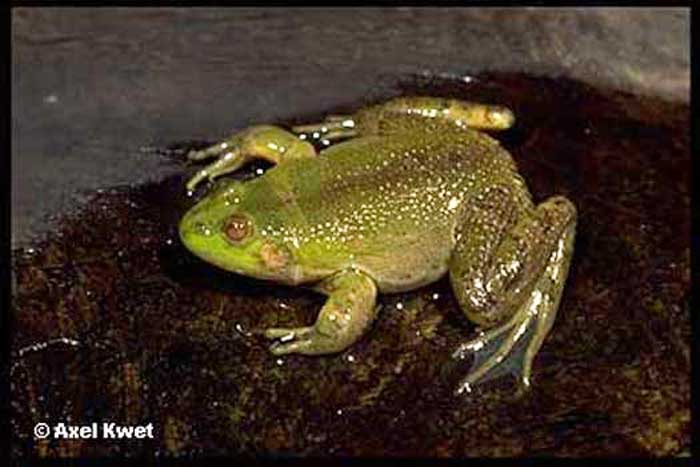Cladus: Eukaryota
Supergroup: Opisthokonta
Regnum: Animalia
Subregnum: Eumetazoa
Cladus: Bilateria
Cladus: Nephrozoa
Cladus: Deuterostomia
Phylum: Chordata
Subphylum: Vertebrata
Infraphylum: Gnathostomata
Superclassis: Tetrapoda
Classis: Amphibia
Subclassis: Lissamphibia
Ordo: Anura
Subordo: Neobatrachia
Familia: Hylidae
Subfamilia: Hylinae
Tribus: Dendropsophini
Genus: Pseudis
Species: Pseudis cardosoi
Name
Pseudis cardosoi Kwet, 2000
Type locality: "Centro de Pesquisas e Conservação de Naturez Pró-Mata, 29° 30´ S, 50° 10´ W, Municipality of São Francisco de Paula, Serra Geral, 960 m a.s.l., State of Rio Grande do Sul, Brazil".
Holotype: MCP 3354.
Synonyms
* Pseudis cardosoi Kwet, 2000
* Podonectes cardosoi — Garda and Cannatella, 2007
References
* Kwet, 2000, Amphibia-Reptilia, 21: 41.
* Garda and Cannatella, 2007, Mol. Phylogenet. Evol., 44: 104.
* Frost, Darrel R. 2007. Amphibian Species of the World: an Online Reference. Version 5.1 (10 October, 2007). Electronic Database accessible at [1] American Museum of Natural History, New York, USA. Pseudis cardosoi . Accessed on 16 Apr 2008.
* 2007 IUCN Red List of Threatened Species IUCN link: Pseudis cardosoi (Least Concern) Downloaded on 16 April 2008.

